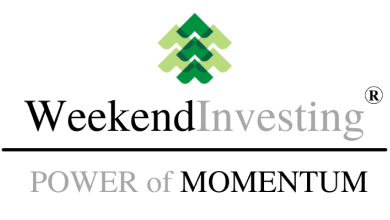Where is the market headed?
Nifty staged a slight recovery today, extending yesterday’s gains. Markets are now focused on the US Fed’s policy outcome, expected tonight (30th July, India time). While no rate change is anticipated, commentary on the outlook for the next two quarters will be key. Any hint of one or two rate cuts this year could be a major trigger, especially for emerging markets like India.
Market Overview
Nifty inched up 0.14%, extending yesterday’s bounce and marking a modest recovery. The move reflects a cautious but steady attempt to stabilise after recent volatility.

Nifty Next 50
Nifty Jr was largely flat, ending the session with a muted move of just 0.08%

Nifty Mid and Small Cap
Mid-caps were nearly flat, edging up 0.18%, while Small-caps slipped 0.1%, showing minimal movement overall.


Bank Nifty
Nifty Bank remained largely unchanged, reflecting a market in wait-and-watch mode. Overall, the session was subdued as participants looked ahead to the next big trigger.

GOLD
Gold moved up 0.5%, now at ₹9,925 per gram. Interestingly, this rise isn’t driven by international prices, which remain steady around $3,325–$3,330. Instead, it’s the sharp move in the USD/INR that’s lifting domestic gold prices.

Advance Decline Ratio
The advance-decline ratio was nearly flat, with 244 stocks advancing and 256 declining, indicating a lack of clear direction in the broader market.

Heat Maps
L&T was the standout gainer in the Nifty, jumping 4.85%, while Tata Motors slipped 3.45% after news of a major overseas acquisition. Outside of these, there weren’t any major movers in the Nifty.
In the Nifty Next 50, strong gains were seen in DMart, Britannia, Varun Beverages, and LTIM, while Motherson, Swiggy, Canara Bank, DLF, and PNB moved lower.


Movers Of The Day
Tata Motors declined sharply following news of a $4.5 billion acquisition of an Italian truck maker. The move echoes the market’s reaction to the JLR acquisition years ago, with the stock continuing its slide from all-time highs.
DMart surged 7% from around ₹4,000 to ₹4,281 on the back of an announcement about 11 new store openings. Despite concerns over high valuations, liquidity clearly favoured the stock today.


Sectoral Overview
Real Estate led the losers again, down 0.96%, followed by Media (-0.8%), PSU Banks (-0.6%), and Autos (-0.6%). The decline in Auto stocks, especially on the 30th, likely reflects cautious sentiment ahead of monthly sales numbers expected on the 1st—markets seem to be anticipating weak data. Capital Markets also slipped 0.3%.
On the upside, Infrastructure saw mild gains, largely driven by strong performance from L&T after its results and a solid order book outlook. Nifty IT showed some recovery, up 0.3%, but other sectoral moves were largely negligible.

Sector of the Day
Nifty Realty Index
Real estate stocks continued their decline with names like Brigade, Oberoi Realty, DLF, Prestige, and Godrej Properties all underperforming. The sector was down 0.96% for the day.
The chart pattern looks weak—after five consecutive down sessions, there was a brief, unconvincing bounce, and the downtrend seems to have resumed. Momentum clearly remains on the downside.


Story of the Day: 3 Ancient Wisdoms on Money That You Should Apply Right Now
In today’s fast-paced world of financial markets and ever-changing trends, true wealth isn’t just about capturing the next big opportunity, it’s about building and sustaining it over time. Enduring prosperity requires more than tactical decisions; it demands timeless principles. Some of the most powerful of these come from India’s ancient money wisdoms, offering deep insights that continue to guide financial behavior today.
One of the foundational truths is this: money is often earned by luck, but lost through poor decisions. In Indian tradition, bhagya or fortune is acknowledged as a real force behind many success stories. The initial breakthrough in business or a career often comes from sheer chance: being in the right place at the right time, meeting the right person, or benefiting from an unexpected external change. A small Kirana store may thrive when a new housing complex emerges nearby. A long-ignored ancestral property may skyrocket in value due to new infrastructure projects. These turning points are not always planned—they are strokes of fortune.
However, while luck can initiate success, foolishness can just as easily destroy it. Wealth is often lost through impulsive or ill-informed decisions. High-risk investments in get-rich-quick schemes, dubious multi-level marketing programs, or blindly following unverified market tips can erode financial security. Taking on excessive debt for extravagant spending like lavish weddings or leveraging to speculate in markets can quickly wipe out what took years or generations to build. Wealth accumulation is often a slow climb, like ascending a staircase. But its destruction can be sudden like falling from a rooftop. Real financial wisdom lies not in chasing extreme returns but in making thoughtful, well-informed decisions, maintaining diversification, and trusting only credible financial guidance. Old money often follows this principle religiously: preserving wealth takes precedence over maximizing gains.
Another timeless truth is that money is an amplifier, it magnifies who a person already is. Contrary to popular belief, wealth doesn’t change one’s character; it simply reveals it more clearly. A generous and community-minded individual, when given more resources, will likely contribute more to society—building schools, funding healthcare, supporting NGOs, or helping those close to them. On the other hand, someone driven by ego or vanity may use wealth to indulge in unsustainable lifestyles, excessive consumption, or exploitative behavior. If selfishness, arrogance, or corruption exist at a person’s core, money will only expand these tendencies. This is why strong values and character must be established before significant wealth is acquired. Money only enhances what already exists.
Another key principle rooted in traditional wisdom is to avoid lending money, especially to friends and family. In many old money families, personal lending is seen as a path to damaged relationships and emotional strain. Lending within close circles often leads to conflict, awkwardness, and broken trust especially if repayment becomes an issue. In Indian culture, where udhaar (credit) among relatives is common, the emotional toll of a loan gone bad can be devastating. The borrower may be shameless about not repaying, but the lender is often reluctant to even ask for their money back, for fear of damaging the relationship. This is precisely why financial boundaries are necessary.
There are more prudent alternatives. If someone close is in genuine need, a smaller amount can be given as a gift, something mentally written off, with no emotional expectation of return. If a larger sum is involved, it’s better to encourage borrowing through formal channels like banks or to structure any lending as a professional arrangement with proper documentation and collateral. This protects both the relationship and the capital. Lending is not just about risk of loss—it’s about opportunity cost, strained emotions, and the potential breakdown of precious personal ties.
One final, often overlooked principle: invest in learning. Many people focus on accumulating financial assets like land, gold, stocks, real estate but forget that the most valuable asset is personal knowledge. In a rapidly evolving world, continuous learning ensures adaptability, smarter decision-making, and better financial judgment. Learning isn’t just an investment of money, but also of time. It expands perspectives, opens new opportunities, and builds confidence in handling complex financial situations. Personal enrichment through learning offers long-term returns that compound quietly but powerfully.
In summary, these timeless insights offer powerful guidance even today. Wealth may begin with a stroke of luck, but its preservation depends on wisdom and restraint. Money reveals true character, it doesn’t create it. Lending to loved ones should be approached with caution to protect both relationships and resources. And lifelong learning is the only sure hedge in an uncertain financial world. These principles, rooted in ancient tradition, remain as relevant today as ever.







